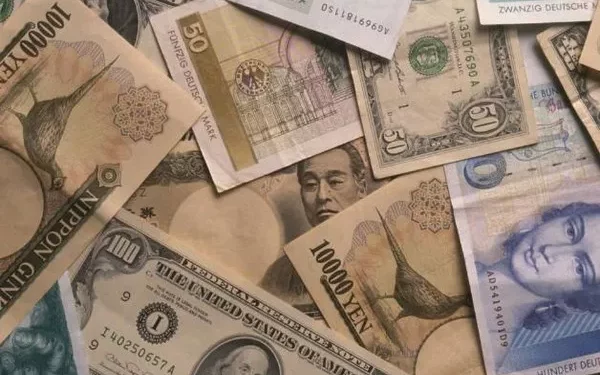The foreign exchange (Forex) market is one of the most dynamic and fast-paced financial markets in the world, where currencies fluctuate based on various economic, geopolitical, and market factors. As such, understanding how different currencies perform in comparison to one another can provide valuable insights for investors, traders, and policymakers. One such comparison that often comes up in the Forex world is between the South African Rand (ZAR) and the Japanese Yen (JPY).
The Rand and the Yen represent two very different economies and financial systems. The Rand, which is the official currency of South Africa, is often seen as a commodity-driven currency, while the Yen, which is Japan’s official currency, is considered a safe haven in times of global uncertainty. In this article, we will compare the two currencies—examining their historical performance, the factors that influence their strength, and analyzing which of the two can be considered “stronger” in different contexts.
The South African Rand (ZAR): Overview
The South African Rand (ZAR) has been South Africa’s official currency since 1961, taking over from the pound as part of the country’s transition to a republic. The currency is symbolized by the “R,” and its name comes from the Dutch word “Rijn,” meaning “river.” The Rand is divided into 100 cents and is issued by the South African Reserve Bank (SARB).
The Rand is heavily influenced by South Africa’s economic performance, including its exportation of commodities such as gold, platinum, and diamonds, and its agricultural sector. The country is also known for its volatility in terms of inflation, political instability, and general economic policies that can greatly impact the currency’s strength.
Historically, the Rand has had periods of significant depreciation, especially in times of global financial instability or domestic turmoil. The Rand’s strength is often measured against major currencies like the U.S. dollar (USD) or the Euro (EUR), and it is known for its volatility—making it a popular choice for traders who want to capitalize on price fluctuations.
Key Influencing Factors for ZAR:
- Commodity Prices: South Africa’s heavy reliance on exports such as gold and platinum means that global commodity prices directly affect the value of the Rand. When commodity prices rise, the Rand tends to strengthen, and when they fall, the Rand weakens.
- Political Stability: South Africa’s political landscape has been tumultuous at times, with high levels of corruption, strikes, and labor unrest, all of which impact the Rand.
- Global Risk Appetite: As an emerging market currency, the Rand is sensitive to changes in global investor risk sentiment. When investors are more willing to take on risk, they may invest in emerging market assets, which can boost the Rand.
- Inflation and Interest Rates: The South African Reserve Bank uses interest rates to control inflation, and higher interest rates can make the Rand more attractive to investors, leading to its appreciation.
The Japanese Yen (JPY): Overview
The Japanese Yen (JPY) is the official currency of Japan, the third-largest economy in the world by nominal GDP. It is one of the most traded currencies in the world, often representing a benchmark for Asian economic activity. The Yen was first introduced in 1871 during the Meiji Restoration and replaced the Tokugawa-era currency system.
Unlike the Rand, which is heavily influenced by commodity exports, the Yen’s value is mainly driven by Japan’s industrial output, monetary policy, and global economic conditions. The Yen is also often considered a “safe-haven” currency, meaning it tends to appreciate during times of global financial uncertainty or economic turmoil. Investors often flock to the Yen when they seek stability, making it an attractive option during periods of market volatility.
Japan has a long-standing reputation for technological innovation and industrial prowess, and this contributes to the strength of its currency. In recent years, Japan’s aging population and deflationary pressures have put stress on its economy, but the Yen remains a key global currency due to the country’s massive economic base and influence.
Key Influencing Factors for JPY:
- Interest Rates: The Bank of Japan (BOJ) has maintained a policy of low or even negative interest rates for many years in an effort to stimulate inflation and economic growth. As a result, the Yen tends to weaken in a low-interest-rate environment.
- Trade Balance: Japan is one of the world’s largest exporters, particularly in automobiles, electronics, and machinery. A positive trade balance—when Japan exports more than it imports—can strengthen the Yen.
- Monetary Policy: The BOJ’s policies have a significant impact on the Yen. The central bank has implemented aggressive monetary easing, including large-scale bond-buying programs, which have kept the Yen relatively weak over the last two decades.
- Safe-Haven Status: The Yen is viewed as a safe-haven currency, meaning it appreciates during times of economic uncertainty. Global crises such as the 2008 financial crash and the COVID-19 pandemic saw the Yen strengthen as investors sought safe assets.
Comparing the Strength of the Rand and the Yen
Volatility and Risk
One of the most significant differences between the Rand and the Yen is their levels of volatility and risk. The Rand, as a commodity-driven emerging market currency, tends to experience higher volatility than the Yen. This is due to the influence of global commodity price fluctuations, domestic political instability, and the overall risk profile of emerging markets. When global risk appetite is low, the Rand often weakens, and when risk sentiment is high, the Rand may strengthen.
In contrast, the Yen is considered a low-volatility, stable currency. As a safe-haven currency, it is more likely to appreciate during times of global economic uncertainty or financial crises. However, the Yen can also experience volatility, particularly when the Bank of Japan’s monetary policies affect its value, such as when interest rates are changed or large-scale interventions occur in the forex market.
Economic Outlook and Global Influence
The economic outlook for both countries also plays a key role in determining the relative strength of their currencies. Japan’s advanced economy, high levels of industrial output, and technological dominance give the Yen a certain level of intrinsic strength. Despite facing challenges such as an aging population, Japan’s strong global economic influence and export capacity help maintain the Yen’s standing in global markets.
On the other hand, South Africa’s economy is highly dependent on commodity exports, particularly precious metals and minerals, and this dependence makes the Rand more susceptible to changes in global commodity prices. The South African economy faces more significant risks from political instability, inflationary pressures, and challenges within its infrastructure and labor markets, which can impact the strength of the Rand.
Interest Rates and Inflation
Interest rates and inflation play a crucial role in determining the strength of both currencies. South Africa has faced higher inflation rates compared to Japan, which has struggled with deflationary pressures. The South African Reserve Bank (SARB) typically sets interest rates to combat inflation, and higher rates can lead to an appreciation of the Rand by attracting foreign investment.
In Japan, the Bank of Japan (BOJ) has maintained ultra-low interest rates for many years to stimulate inflation and economic growth. This has resulted in a weaker Yen over the long term, as low interest rates reduce the appeal of the currency for investors seeking higher returns.
Which Currency is Stronger?
To determine which currency is stronger—whether the Rand or the Yen—depends on how “strength” is defined. If we are talking about the relative value of each currency against the U.S. dollar (USD), the Japanese Yen is generally considered stronger than the South African Rand. As of 2025, the exchange rate for the Yen is much higher (closer to 100 JPY for 1 USD) compared to the Rand (around 18 ZAR for 1 USD). The Yen’s higher value relative to the USD is partly due to Japan’s advanced economy, low inflation, and the country’s trade surplus.
However, in terms of volatility and potential for higher returns, the South African Rand may be seen as “stronger” for traders looking to capitalize on short-term fluctuations. The Rand’s sensitivity to global commodity prices, interest rate changes, and risk sentiment makes it a high-risk, high-reward currency in the Forex market. Conversely, the Yen is generally more stable, offering lower risk and more consistent returns.
Conclusion
The South African Rand (ZAR) and the Japanese Yen (JPY) represent two distinct types of currencies. The Rand is an emerging market currency with high volatility, while the Yen is a safe-haven currency that benefits from Japan’s advanced economy and low inflation.
In terms of intrinsic value and global financial stability, the Yen is typically the stronger currency. However, for traders and investors who are willing to take on risk for potential reward, the Rand offers opportunities due to its volatility and sensitivity to global economic conditions.
Ultimately, the question of which currency is stronger depends on the specific context in which the comparison is being made—whether it is in terms of absolute value, risk profile, or investment potential. Each currency has its strengths and weaknesses, and understanding the dynamics behind them is crucial for making informed decisions in the Forex market.
Related Topics:
























